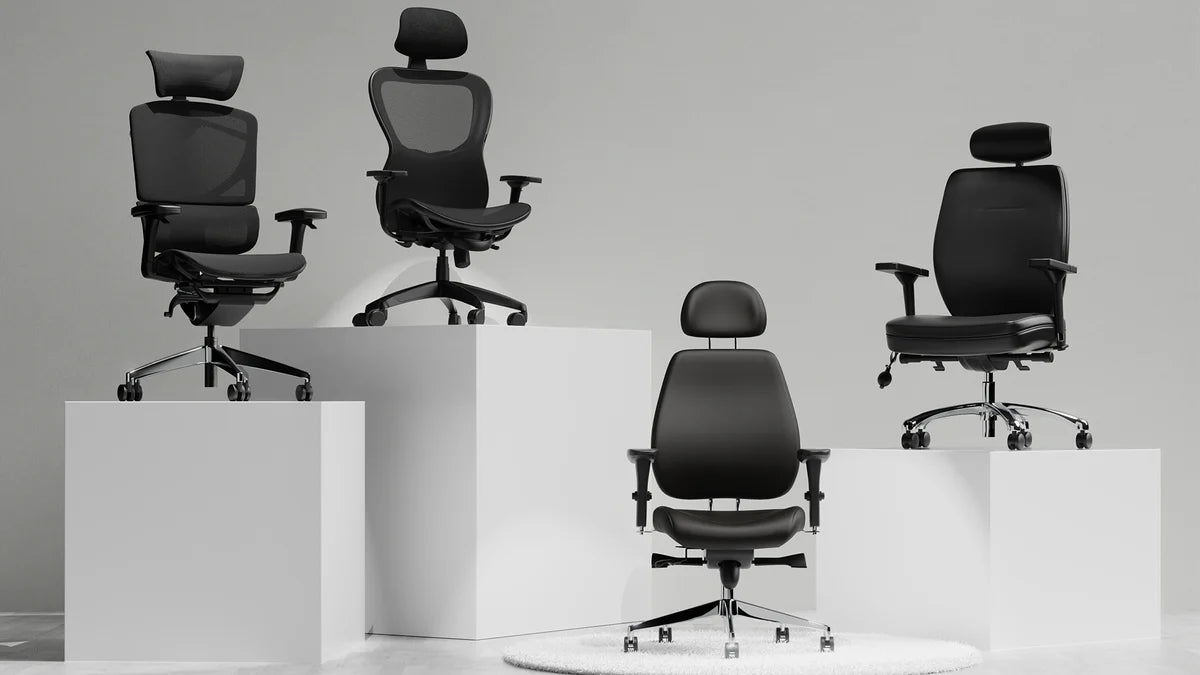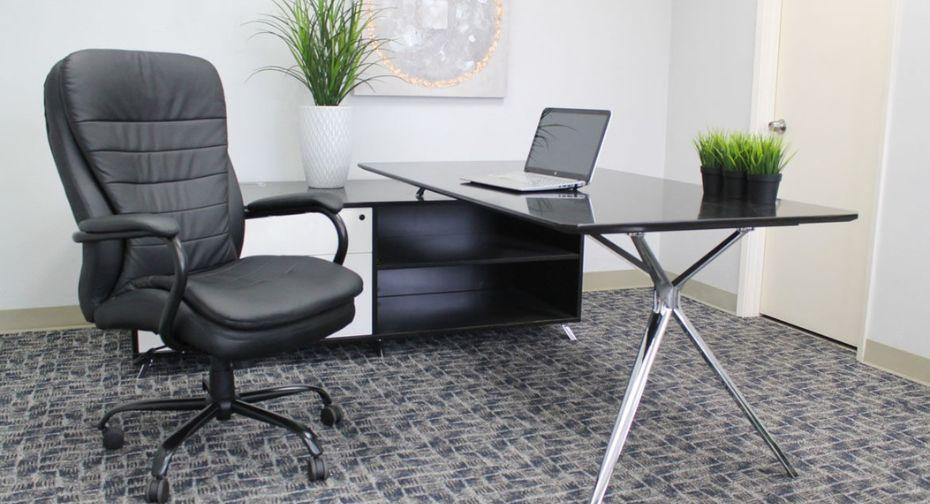Massive warehouse clearance sale! Save up to 70% off RRP - Visit us today!
Massive warehouse clearance sale! Save up to 70% off RRP - Visit us today!
Desks & Tables
Chairs
Office Storage
Accessories

How To Sit Properly At A Desk
February 27, 2024 4 min read
Sitting correctly at a desk is important. It helps stop pain and keeps you healthy in the long run. Adjust the chair so that the feet are flat on floor and the knees form a 90 degree angle. Sit in the chair with your lower back against the seat backrest to provide lumbar support. Incorporate regular breaks and stretching into your routine as part of the overall strategy on how to sit properly at a desk.
Avoid straining your neck by positioning the monitor at eye-level. The elbows should be at a 90 degree angle. To maintain the natural curve in the spine, use an ergonomic chair that has good lumbar support.
Regularly take breaks to stretch and move to promote circulation and prevent stiffness. Consider using different sitting positions to relieve pressure on your lower back, including cross-legged and with a footrest.
In general, maintaining a neutral and supported sitting posture will increase comfort and reduce the risk of musculoskeletal problems associated with prolonged deskwork.
How To Sit Properly At A Desk

1. Adjust Your Chair Height
To sit properly at a computer, adjust the chair so that your feet rest flat on the ground.
It will help you distribute your weight evenly and reduce neck and back strain. Adjust the chair so that your knees and hips are in line, and your elbows at a 90 degree angle with your arms.
2. Sit With Your Back Straight
Maintain good posture when sitting at your desk. Keep your back straight. Avoid leaning or slouching forward, as it can put pressure on the lower back and neck.
Imagine a string at the top of your ear pulling you upwards.
3. Use A Lumbar Support Cushion
Use a lumbar cushion to maintain your spine's natural curve. This reduces pressure on your lower spine, which may occur after long periods of sitting at a desk.
4. Relax Your Shoulders

It's easy for your neck and shoulders to become tense when you sit at your desk. This can cause discomfort and pain. Relax your shoulders by keeping them down.
To relieve tension, you may want to do shoulder rolls and stretches all day long.
5. Place Your Computer Screen At Eye Level
It is important to place your computer monitor at eye level in order to avoid neck strain. You should place your computer screen at eye-level so you do not have to bend your neck up or down to view it. Adjust the monitor's height if necessary or use a stand.
6. Take Frequent Breaks
Sitting for long periods of time can be very stressful on the body. Take frequent breaks and stand up to stretch or walk around. Even short breaks can alleviate discomfort and reduce muscle stiffness.
7. Avoid Crossing Your Legs
When you cross your legs, it can cause pressure on the hip muscles. It will also affect your posture. Keep your knees and feet level. Use a footrest if you want to keep your legs comfortable.
The Desk Posture Debate: Sit Straight Or Not?

Explore both sides and find out what works for different people.
The Case For Sitting Upright At Your Desk
Sitting upright helps you to engage your core muscles which supports your spine and relieves strain on your back. Sitting upright also helps you to breathe easier and improves circulation [1].Work-Fit is an ergonomics consultancy that recommends:
Straighten your back
You should keep your feet flat on the ground
You should hold your arms at 90 degrees.
This position will help to maintain your spine in neutral, reducing the pressure on your lower back.
Back Intelligence is a back health organization that suggests you sit with your back straightened and shoulders relaxed.
This position can help reduce tension and headaches by reducing tension in the neck and shoulders.
The Case For Leaning Slightly Back At Your Desk
Nevertheless, there are some studies that suggest that it may not be necessary to sit upright all the time. In a study published in Applied Ergonomics, it was found that slouching can reduce stress and help you relax.
Concept Seating, which makes ergonomic chairs, claims that sitting in a reclining position, is more comfortable. This is because it helps to distribute your body weight evenly.
The position may be more comfortable for those who spend long periods of time sitting.
Find Out What Works Best For You

To prevent back pain, the job search website suggests that you take frequent breaks, stand up, and stretch regularly.
Chair Office recommends that you use an ergonomic chair to support your back, and encourage good posture.
A good ergonomic chair will have features that can be adjusted, such as a backrest or armrests. This allows you to find the best position for comfort and support.
Conclusion
Sitting properly at a workstation is essential to maintaining a healthy, comfortable workplace. Following key guidelines such as adjusting the chair height to achieve optimal posture, placing the monitor at eye-level, and maintaining a 90 degree angle at the elbows and knees can reduce the risk of developing musculoskeletal problems and improve overall health. Ensure your arms form a 90-degree angle at the elbows and rest comfortably on the desk when learning how to sit properly at a desk.
Leave a comment
Also in News

Creating an Ergonomic Workspace: Boost Comfort and Productivity with Posture Seating in Modern Offices
November 13, 2024 3 min read



















